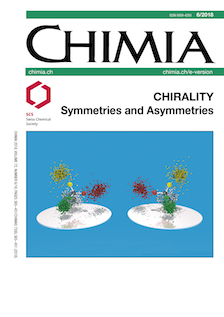Towards Ultracold Chiral Molecules
DOI:
https://doi.org/10.2533/chimia.2018.375Keywords:
Chiral molecules, Laser coolingAbstract
Atoms can be cooled and trapped efficiently with the help of lasers. So-called Doppler cooling takes advantage of momentum transfer upon absorption and emission of photons and of Doppler shifts to facilitate effectively closed optical absorption–emission loops, by which atoms are slowed down and cooled. Due to the wealth of internal degrees of freedom accessible in molecules, it was assumed for a long time that similarly closed optical loops cannot be realised for molecules. After an early theoretical proposal by Di Rosa for diatomic molecules, such cooling has been achieved in this decade for SrF, YO, CaF and YbF. It has been outlined recently that also polyatomic molecules should be coolable with lasers and classes of molecules expected to be amenable to this have been proposed by the present authors. Experimental success in laser cooling of SrOH has been reported. The status of cooling polyatomic molecules with lasers and the prospects for obtaining ultracold chiral molecules is reviewed herein.Downloads
Published
2018-06-27
Issue
Section
Scientific Articles
License
Copyright (c) 2018 Swiss Chemical Society

This work is licensed under a Creative Commons Attribution-NonCommercial 4.0 International License.
How to Cite
[1]
Chimia 2018, 72, 375, DOI: 10.2533/chimia.2018.375.







